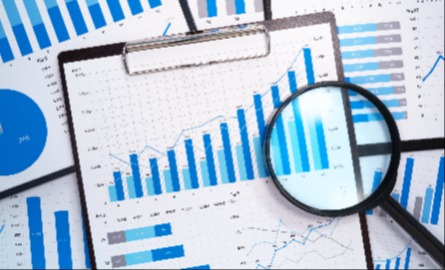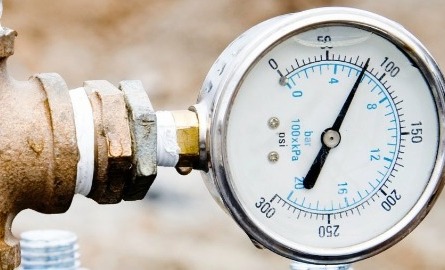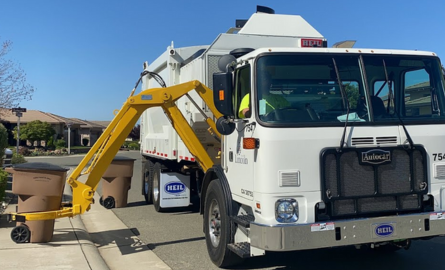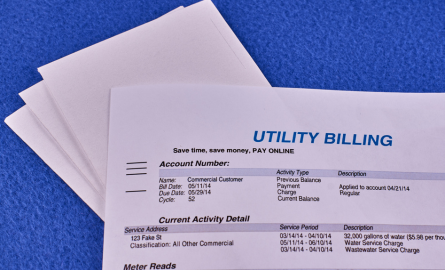Utility Rate Information
To keep pace with inflation and rising costs of providing safe, reliable water, sewer, and trash services, the City of Lincoln is conducting a utility rates study of its water, wastewater (sewer), and solid waste (trash) services. Currently, customers are paying 2013 and 2017 rates depending on the utility. Over the past 10 years, inflation has risen nearly 30 percent affecting the costs of providing these services. The goal of the rates studies is to ensure that the rates customers pay for water, sewer, and trash services are:
- Fair, equitable, and aligned with community values and priorities
- Sufficient to ensure the continued financial viability of City utilities
- Sufficient to enable critical maintenance and infrastructure investment to continue high levels of service while complying with ever more stringent regulatory requirements
- Aligned with best practices and in accordance with state law
The public is encouraged to follow the rates study process and learn more about your water, sewer, and trash services. Follow this page and join us at community and public meetings listed below to learn how rates are determined, California Proposition 218 requirements, and how the rates you pay are an investment in our critical infrastructure.
View the existing utility rates.




| Meeting | Location | Date | Slides | |
|---|---|---|---|---|
| FIOC - Special Meeting | City Hall/Zoom | June 5th, 2023 | ||
| SCLH Community Meeting | June 6th, 2023 | |||
| Public Works Open House |
City Hall - View the flyer. |
June 6th, 2023 | ||
| Verdera Community Meeting | June 7th, 2023 | |||
| Live Virtual Webinar | Zoom |
June 8th, 2023 | Video | |
| City Council Meeting | City Hall/Zoom |
June 13th, 2023 |
Frequently Ask Questions
City of Lincoln Rate Specific Questions
|
Why is the increase so HIGH? |
| Water and sewer rates haven’t been increased in about 10 years. The large increases will have a practical effect of bringing the water and sewer utilities out of their current significant structural deficit and ensure there are sufficient funds to pay for water supplied to customers and pay for processing sewage. |
|
Is the increase so high because of all of the new development? |
|
No. New homes and new development must pay their own way. The rate increases will pay for the cost of water, the cost of sewage treatment and to repair and replace pipeline and equipment. |
|
Why haven't rates been increased in smaller increments over time? |
| There are several reasons rates weren’t increased in past years. Some reasons include economic conditions at the time, alternate funding strategies for infrastructure improvement projects etc. However, inflationary changes experienced, in addition to deferred maintenance have created a situation where the utility funds have reached a point that if rates are not increased imminently water and sewer will be bankrupt in the next 13 to 18 months and garbage will be bankrupt in about 30 months |
|
Can’t these increases be spread out over a longer period of time? |
| Unfortunately, no. Rates haven’t been increased for water and sewer for about 10 years and garbage rates haven’t been increased since 2017 as Lincoln has generally maintained very low utility rates when compared regionally to other Cities and Jurisdictions. Spread out rates will not course correct the utility account sufficiently to avoid potential bankruptcy in the near future. With that said, proposed rates will be very comparable with a number of local Cities and Jurisdictions you can find more information on these comparisons within your proposition 218 notice. |
|
How come the CIP portion of the water rate is increasing so much (from $0.81 to $14.25 for ¾” meter)? |
| In 2020, the City lowered the CIP portion of the water rate from $16.10 to $0.81. At the time the City was using another funding source to make up the difference but now that funding source is not longer available. CIP dollars are only used to repair and replace existing pipeline, lift stations and equipment. These dollars do not go to new development. |
|
How do I estimate my new bill? |
|
On the notice in the sections for water, sewer and garbage look for Bill Impacts. Those sections provide examples of the new rate amounts. If you don’t know your water meter size or want help estimating your bill, send an email to RateStudiesQs@lincolnca.gov or call us at (916) 434-2430. |
|
How do I protest? |
|
On the notice you received there’s a form that can be cut out and mailed or dropped off at the City Clerk's office at 600 6th Street, Lincoln. |
|
What happens if rates aren’t increased? |
|
Without rate increases the water and sewer utilities will be bankrupt in the next 13 to 18 months and garbage will be bankrupt in the next 30 months. If that happens, the City will either have to use General Funds dollars which means significantly less overall funding is available for police, fire, library staffing and other general fund functions. The General Fund is not and will not be in a financial position to carry the burden of funding utility operations. There are other likely consequences which will be discussed in detail at upcoming community forums and Council meetings. |
|
I’m on a fixed income, how can I pay for this? |
|
We know these rate increases are high, but water and sewer rates haven’t been increased in 10 years and garbage rates haven’t been increased since 2017. Staff will ask the City Council to consider a program to provide some assistance for segments of the community such as low-income families and seniors, but we have to find the funds to implement this type of program, rates can’t be used to fund it. We know the proposed rate increase is significant, and you have a lot of questions and concerns. The City of Lincoln would like to hear your opinion and concerns! Have your voice heard, get answers, connect with fellow community members either on our website at www.Lincolnca.gov/ratestudies or at one of our community meetings in July. Additionally, you can email us at RateStudiesQs@lincolnca.gov or call us at (916) 434-2430. |
Utility Rate Study Questions
| What is a utility rate study and why is it necessary? |
| A utility rate study is an evaluation of the costs incurred by a utility provider to provide services to its customers and an analysis of the customer rates and necessary to ensure they are fair and reasonable. |
| Who conducts a utility rate study and what factors are considered? |
| A utility rate study can be conducted by an independent consultant hired by the utility provider or by the utility provider's staff. Factors that may be considered in a utility rate study include the cost of providing service, the revenue needed to cover those costs, the number of customers, the usage patterns of customers, and the regulatory environment in which the utility provider operates. |
| What is the purpose of a public hearing in a utility rate study? How often should a utility rate study be conducted? |
| A public hearing is an opportunity for customers to provide input on the proposed rate changes and to ask questions of the utility provider or the consultant conducting the rate study. Utility rate studies are typically conducted every two to five years, depending on the size and complexity of the utility provider and the regulatory environment in which it operates. |
| How are the results of a utility rate study used? |
| The results of a utility rate study are used to determine whether rates should be adjusted, and if so, by how much. The results may also be used to develop rate structures that encourage conservation or to address other policy goals. |
| What is a cost-of-service analysis? |
| A cost-of-service analysis is a study that evaluates the costs incurred by a utility provider to provide services to its customers and determines the appropriate rates to be charged to ensure that those costs are recovered in a fair and reasonable manner. |
| What is a rate design? |
| A rate design is the structure of rates charged to customers, including the types of charges (such as fixed fees or variable charges), and the levels of those charges. |
| How are the City of Lincoln’s water, wastewater, and solid waste utilities funded? |
| The City’s utilities are funded through Enterprise Funds in large part by the rates customers pay. Enterprise Funds are separate from the City’s General Fund. Customer payments ensure our ability to deliver high-quality, reliable water, wastewater (sewer), and solid waste services in a manner that values our environment and community, and sustains the resources entrusted to our care. The City of Lincoln is committed to good governance, fiscal accountability, and transparency, with systems and policies in place to earn the trust of our ratepayers and constituents. |
| Do the City’s water, wastewater, and solid waste utilities make a profit? |
| No. By law, we cannot charge customers more than what it costs to provide the service. Each utility is self-funded, so its revenues must equal its expenditures. Our system is owned by our customers and governed by the City Council; we do not have shareholders or pay dividends. |
| Why is the City conducting a rate study? |
| Rates studies are conducted as an industry best practice to ensure that a utility’s financial health is maintained and that the City is setting a course toward meeting future financial obligations. The industry standard is to perform comprehensive rate studies every three to five years. A rate study was planned several years ago but was postponed during which time the pandemic happened. Rates must cover the cost of service and maintain prudent reserves in case of an emergency, such as an earthquake or wildfire, that could damage major critical infrastructure. With wastewater (sewer) and water rate adjustments, the City will be able to budget and fund the annual level of capital reinvestment needed to upgrade obsolete equipment and replace infrastructure at the end of service life and provide financially and operationally sustainable wastewater (sewer) and water service. California’s new organic waste regulations went into effect on January 1, 2022, and added additional cost pressures to solid waste and disposal rates for nearly every city and county in the state. Costs associated with implementation and updating and adding infrastructure are one of the factors for solid waste rate increases. Failure to comply with state regulations can result in hefty penalties. |
| Why do you need to adjust water, wastewater (sewer), and solid waste rates now? |
| Revenues from the current rates and fee structures are not fiscally sustainable. Rates must keep up with costs to operate the systems. The City is conducting these much-needed water, wastewater (sewer), and solid waste rates studies to develop a new 5-year rate structure to financially support the utilities’ current and future needs. Utility services are experiencing the same global impacts of inflation. Rates must keep up with costs to operate each system. The City’s rates are based upon the actual costs of providing water, wastewater (sewer), and trash services to you, nothing more. We raise rates when necessary to cover operating and capital costs to maintain the systems. |
| How are rates set? |
| Proposed rates are determined following evaluation and analysis of cost escalations related to operation and maintenance, costs to purchase water, wastewater treatment, capital projects’ costs, general inflation, and material cost increases. California’s Proposition 218 requires local municipalities to follow certain procedures when proposing a rate adjustment to services such as water, wastewater (sewer), and trash services. A property owner has an opportunity to protest the proposed rate increases if they feel they are unwarranted. Under Proposition 218, ratepayers will receive a public notice detailing the proposed rate adjustment, protest process, and the City Council Public Hearing date. Customers have 45 days to protest rate adjustments through a written process. In the Public Hearing, the City Council will review customer protests and consider approving or denying rate adjustments. Should the City receive a majority protest from its customers, rate adjustments will not be implemented. |
| Is revenue from utility rates used on any non-utility projects? |
| No, Enterprise Funds can only be used for the specific Fund’s projects. |
| What is the City’s rate study process, and how will the community be kept informed? |
| The City hired Raftelis Inc., a consulting firm with expertise in utility rate studies in California and across the country. Their scope of work includes developing long-range financial plans for water, wastewater, and solid waste services and assisting with the California Proposition 218 process and public hearing for rate adoption. The rates studies consist of a series of steps involving data evaluation, performing technical analyses, deriving customer rates, and understanding customer impacts of any modifications. Once rate proposals are determined, each complete study is documented in a Study Report to serve as part of the City’s administrative record. In California, all parcels connected to a utility system must be given notice of any rate changes with the ability to protest the proposed rates. The notice details the proposed rates, the basis for calculating the proposed rates, the reason for the proposed rate increase, the details of the public hearing, and the ratepayers’ or property owners’ right to protest. After a protest period of no less than 45 days, the City Council can conduct a Public Hearing. Absent a majority protest to the rate proposal, the City Council may choose to adopt the rates as noticed. |
| What do rates pay for? |
| The City is committed to using industry best practices to ensure we thoughtfully plan for the future. Utility rates are an investment in our infrastructure today to secure our systems for the future. Revenues derived from water, wastewater (sewer), and solid waste rates ensure the continuity of operations and reliable service delivery to nearly 50,000 people who live, work, and visit Lincoln. Rates pay for the expenses to provide the utility service. |


